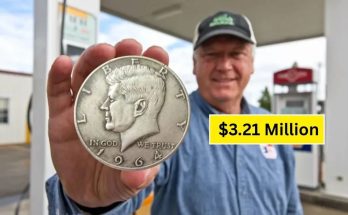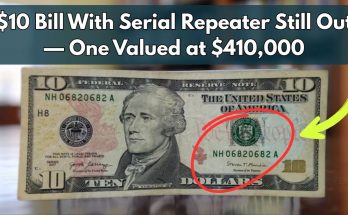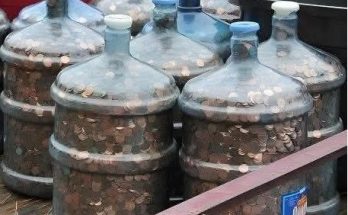The 1970s were a tumultuous and triumphant time in United States history. Many of the cultural changes that began in the 1960s carried over into the next decade, but disco ruled the dance floor and bellbottoms took over the fashion world. The United States landed a man on the moon, IBM developed the first personal computer, and great medical advancements like the artificial heart came into existence.
Perhaps the biggest celebration the world has ever seen began its planning stages in the early 1970s. A multi-year event to celebrate the Bicentennial anniversary of the signing of the Declaration of Independence swept the country. In addition to parades and souvenirs, this celebratory time in the U.S. included the Treasury of the United States issuing its first circulating commemorative coins—the Bicentennial quarter was one of those coins.
Design
Under the auspices of Public Law 93-127, Secretary of the Treasury, George P. Schultz, directed Mrs. Mary Brooks, Director of the Mint, to design three new coins emblematic of the Bicentennial of the American Revolution and to begin production on July 4, 1975. The three coins chosen to proclaim the bicentennial were the quarter, half-dollar, and one-dollar coin.
The people of the United States had not seen a commemorative coin since 1954 when the Treasury Department discontinued the commemorative coin program due to abuses by politicians and special interest groups. The excitement for the Bicentennial celebration fueled interest in new commemorative coins. The Treasury Department asked the National Sculpture Society to conduct a design contest among its nationwide membership, impanel a jury of experts to judge the entries, and submit several designs for each denomination to the Secretary of the Treasury.
Production
The new commemorative coins would use the obverse design of the Washington quarter, Kennedy half dollar, and Eisenhower dollar, except they would possess the dual date of 1776-1976. The reverse would feature the winning design by Jack L. Ahr on the Washington quarter, Seth Huntington’s design on the Kennedy half-dollar, and Dennis R. Williams’ design on the Eisenhower dollar.
However, like any good story, there has to be some controversy. According to an article in the American Numismatic Association publication The Numismatist, Ahr was accused of copying his drummer from a 1973 stamp by the stamp’s designer, William A. Smith, who denied it. According to numismatic historian Walter Breen, “both obviously derive from Archibald Willard’s 1876 painting Spirit of ’76, a painting which numismatic author David L. Ganz suggests that both undoubtedly saw some time in their lives. Ahr, however, stated that his son had been the model for the drummer. In a letter to Smith, Brooks stated that the design for the quarter was “sufficiently original” to impress the National Sculpture Society.
To ensure that all Americans had access to these commemorative coins and to discourage hoarding, production of these 1976-dated coins began in the prior year on July 4, 1975. Over the next eighteen months, the Mint produced billions of these coins. Additionally, special finishes and silver compositions were created specifically for coin collectors.
Total mintages for business strike coins of the 1976 Bicentennial quarters comprised the following:
- 1776-1976 copper-nickel clad from Philadelphia (no mintmark): 809,784,016
- 1776-1976-D copper-nickel clad from Denver: 860,118,839
Three special edition coins were specifically marketed to coin collectors. These included the following:
- 1776-1976-S Proof copper-nickel clad: 7,059,099
- 1776-1976-S uncirculated silver-clad (40% silver): 11,000,000*
- 1776-1976-S Proof silver-clad (40% silver): 4,000,000*
*Several million silver Bicentennial quarters were melted in the 1980s. So while there are still millions of silver 1976 Bicentennial quarters around, that number is nowhere near the 15 million originally made.
Collecting
Since over 1.6 billion Bicentennial quarters were made between the Philadelphia and Denver United States Mint facilities, they are still occasionally found in circulation. Many United States citizens thought that these coins would be valuable in the future since they were commemorating the 200th anniversary of the signing of the Declaration of Independence. Therefore, gem uncirculated specimens can sometimes be found in pocket change because somebody cashed in the coins they’ve been hoarding since 1976. Additionally, nice collector-quality coins can be purchased from your favorite local coin dealer or on the Internet.
Although business strike coins made for circulation are plentiful, high-quality nicely-struck coins are hard to come across. Remember, the Mint was under intense pressure to produce as many bicentennial coins as possible due to the likelihood of hoarding. Therefore, they sacrificed quality to gain quantity. When selecting a coin for your collection, look at the high points on Washington’s cheek to ensure there is no evidence of wear and that the coin is fully struck. On the reverse side, look for weakness and lack of detail at the top of the drum. Coins with minimal surface scratches, dazzling mint luster, and excellent eye appeal are necessary for any outstanding coin collection.
Coins made specifically for collectors include the Proof copper-nickel clad, uncirculated 40% silver quarters, and Proof silver quarters. Since the Mint manufactured these coins with great care, scratches and surface damage are rarely a concern. However, many Proof coins made with fatigued dies had diminished the intensity of the frosting on the devices and reduced the cameo contrast. Look for coins with deep frosting on the devices and extreme reflectivity on the mirror-like fields.
Unfortunately, many people did not store their special collector edition coins properly over the years. Many collectors and individuals purchased them directly from the United States Mint and then stored them in less-than-ideal conditions. This may have included boxes that ended up in attics and basements. The extreme temperatures and moisture in these areas can cause toning and corrosion on the coin’s surface. Avoid purchasing any coin that has a haze on the coin’s surface.
Investing in Bicentennial Quarters
Since circulation strike quality coins were made by the billions, and collector coins were made by the millions, nice examples are readily available in the marketplace. However, since the quality was sacrificed for quantity, extremely high-grade coins can sell for thousands of dollars.
Obtaining this price level will entail submitting the coins to one of the top-tier third-party grading services (NGC or PCGS) for certification. Unfortunately, if the coin does not grade in one of the finest known categories, it will not be worth the money it took to have it graded and encapsulated.
Bicentennial Quarter Values and Prices
Since circulated examples can be readily found in circulation, they are worth no more than face value. However, uncirculated coins and special edition coins made for collectors, are worth slightly more.
| Date & Mint | Circ. Buy | Circ. Sell | Unc. Buy | Unc. Sell |
| 1976 Copper-Nickel-Clad | F.V.* | F.V. | $3.00 | F.V. |
| 1976-D Copper-Nickel-Clad | F.V. | F.V. | $3.00 | F.V. |
| 1976-S Copper-Nickel Clad Proof | -** | – | $4.00 | $2.00 |
| 1976-S 40% Silver Uncirculated | – | – | $6.00 | $3.00 |
| 1976-S 40% Silver Proof | – | – | $8.00 | $4.00 |
*F.V. = Face Value
**No data available because these coins are rarely ever found in circulated condition.



